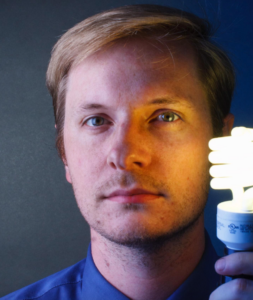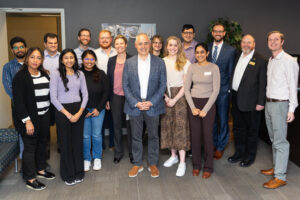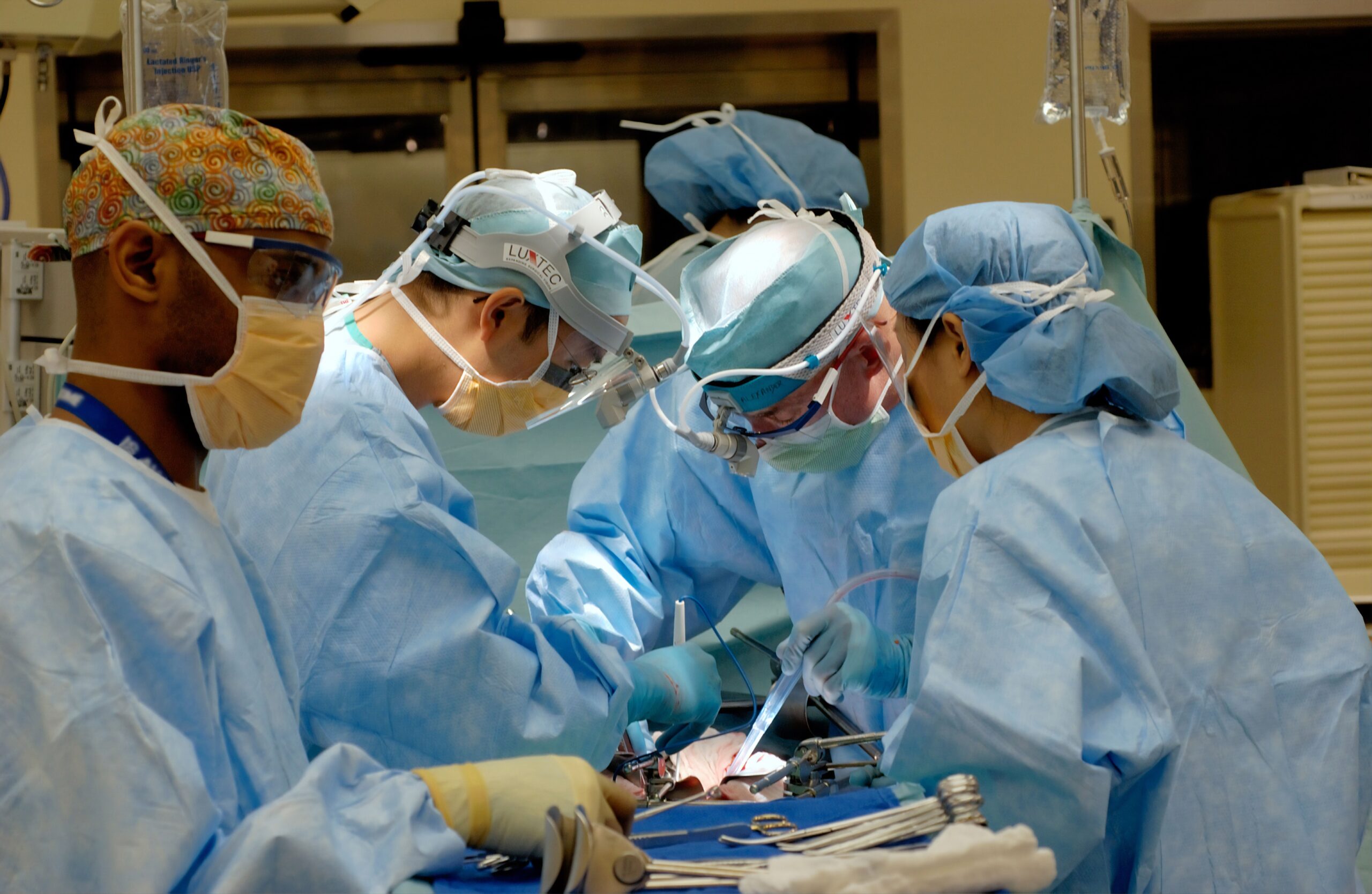
Marty Jacobson
By: Marty Jacobson with Paul Snyder
Because clinicians have such an intimate knowledge of unmet clinical needs, hospitals are fertile ground for medtech innovations that improve value and outcomes. But bringing a technology or device to bear in clinical use, especially at any scale, works in much different, much more rigorous ways and paths than any other type of innovation.
Launched just last year, “The Emory Innovation Certificate Program is designed to develop and enrich entrepreneurial skills and business knowledge for faculty and staff interested in learning how to bring technologies to market. The program is directed by Steven Goudy (otolaryngology) and Adam Klein (otolaryngology head and neck surgery) and will include speakers from across the Atlanta Innovation ecosystem from Biolocity, Georgia Tech, Goizueta Business School, Georgia Research Alliance, Emory Office of Tech Transfer and others.”
Following closely on the heels of our presentation to the Children’s Hospital of Philadelphia Academic Entrepreneurship Professional Development Course, GCMI’s Emily Blum, MD and Marty Jacobson recently shared their insights on stakeholder identification, design and development pathway efficiency and the meaning of “minimum viable product” for medtech innovation with the Emory Healthcare Innovation Certificate Program participants.
Marty shares here the following six insights and takeaways for researchers and clinicians with hospital affiliation and innovation imperatives or initiatives.
1. The FDA is not concerned with your funding and its mission or requirements, nor are they concerned with your IP, patents or scientific publications which may be voluminous. They are laser focused on safety.
Hospitals and health systems are full of amazing, high performing innovative people, including clinicians, who know well their unmet clinical needs and often have corresponding funding for associated research, but ‘concept-to-commercialization’ in medtech is its own discipline to which experts dedicate their entire careers. The common presumption among researchers and clinical innovation is that funding from the National Science Foundation or National Institute of Health coupled with high impact research on actual clinical problems is going to successfully align with what it takes for a successful FDA 510k or PMA application.
That is not the case. In reality, IP, publications and research have no inherent overlap with regulatory submissions or approval. A researcher or clinician with medtech innovation, clinical utility and commercialization aspirations can have 50 Nature articles to their credit. It’s not that the FDA doesn’t care, but the aims of those studies and publications are not structured to map onto FDA’s objectives.
The FDA is chartered to protect public safety. Their concern is not scientific advancement to drive forward applications of a technology or ‘painting with a broad brush’ to drive a technology forward. The FDA seeks to assure new medical technologies’ safety and efficacy first and foremost.
A robust innovation ecosystem within a hospital or health care system should have a strategic approach to commercialization. Such an approach leverages clinicians’ knowledge of the unmet clinical need against available funding and research opportunities, ultimately supporting the science, technology and clinical knowledge to successfully bring the new device or technology to market.
2. There are no dumb users, and risk mitigation belongs to you first.
The FDA pays close attention to useability and human factors. Medtech innovators must prove all that can be done has been done to ensure safety including human factors. Innovators cannot depend solely on instructions for use to protect them from liability for an adverse event involving their device or technology. Innovators need to design the device or technology so that the possibility of an adverse event due to user error is inherently mitigated through the device, system or technology’s design.
Consider all foreseeable use cases for your device or technology and be prepared to justify them. For some clinical medtech innovators, a risk mitigation strategy may be to hire an engineer to literally stand side by side with a surgeon to ensure everyone’s safety. To avoid this extremely high cost “strategy,” consider the technology’s use application and make a deliberate effort to make things intuitive, easy to understand and use. Often people don’t read the instructions for use even in a clinical setting.
For example: is a handheld device’s handle entirely clear that it is actually the handle? Is it possible a user can hold it the wrong way? Is the handle legitimately ambidextrous or will you need to have left handed and right handed versions available? You need to know this in no small part because regulators will want to know it as well.
 3. Before brainstorming: Define. The. Problem. And craft a user needs assessment specifically tailored to the problem in close alignment with FDA regulatory submission requirements.
3. Before brainstorming: Define. The. Problem. And craft a user needs assessment specifically tailored to the problem in close alignment with FDA regulatory submission requirements.
Too many technologies go looking for a healthcare problem to solve when the inverse, applying creativity and technological prowess to a well-defined problem is the path to innovation with higher likelihood of clinical success and high commercial potential.
Conduct interviews and make observations from all potential user groups to define the problem as specifically as possible – without presuming a solution. Then craft a needs assessment customized to the regulatory requirements for the technology’s classification. Draft the user needs with support from a career medtech professional, then convert the user needs into design inputs.
Now you’re ready to brainstorm. We use a PUGH matrix to evaluate and rank ideas based on user needs “downselecting” to get to a device that is easily produced and tested as the optimal gateway to a successful minimum viable product (MVP).
4. Minimum Viable Product (MVP) for new medical technologies is probably not what you think it is.
Speaking of MVPs; an MVP for medical technology development will often be less than the minimum needed for clinical utility and commercial adoption. What metrics will be used to assess the device’s value to the clinician, patient, hospital and / or health system? Answering this question effectively often means an innovator does not have to generate expensive clinical data or evidence to satisfy regulatory requirements before it can be put to work or introduced to the market. For example: we just need this connector to connect more quickly than the ones we’re currently using. Excellent. How many seconds faster does the connection happen with the new device versus the old? That is a simply measured answer to a well defined user need. And is it worth an additional $100 per unit? Now you’re getting a feel for the many ways in which medtech innovation can quickly fall from the rails.
MVP for initial regulatory clearance is usually less than what a device company’s sales and marketing folks will want to claim. Ambitious claims are a very quick way to get into trouble in many ways. Here are a few.
First, if you are unwilling to budge on what you want to claim (which can often happen when goals are too heavily influenced by inventor return requirements, or perceived sales and market share opportunities) a $2M, two year path can quickly become a $50M, ten year path to commercialization. If you believe you must be able to make certain claims to capture a certain market segment, size or sales target, stop and reevaluate your options. If you reach that point, it’s time to contact GCMI.
Second, the way an innovator sees their technology is not the way the FDA sees it. Adding AI interpretation in an attempt to make an image “more visible” is enticing. But the FDA may well view that technology as a risky new device with a much longer approval pathway sans a predicate they deem sufficiently equivalent.
In another example, a pill bottle is a low risk, Class I device. But if you want to claim that simply printing the label or embossing the bottle with a larger font will reduce dosage errors and / or complications, you must verify and validate that claim with substantial evidence potentially involving lengthy, expensive clinical trials by making a claim involving life saving benefits. Beware. This approach may work fine for consumer technologies that don’t have life threatening potential. It will not fly in medtech.
In this example, it may be acceptable to launch the bottle with a larger font, but without making that specific claim. Start generating revenue and in post market surveillance, gather clinical evidence and then submit the new data for the purposes of establishing the claim you really want to make. In this way, your own device can serve as “the predicate” and you can build as you go.
5. Failing to align innovation with regulatory requirements is wasteful. And futile.
At the 30,000 foot level, align innovation with regulatory requirements or you’re just wasting time and money. Scope what you’re trying to do. Identify the clinical problem and define it in terms that can be measured or else the scope is likely to be so broad or vague that FDA will require a burdensome evidentiary requirement on almost every element.
If, for example, you want to claim that your new shears cut gauze faster than what’s currently approved for clinical use and are successful in the market, you will now have to monitor surgeries in large numbers, which could be a $30MM study.
 6. It’s never too early to get in touch with us
6. It’s never too early to get in touch with us
You may be in the early stages as a career faculty or clinician, but if you want to have a company with a technology developed in the next 10 years, there are things you can be doing now to set yourself up for success later you will wish you had been doing from the start.
If you have resources like Emory’s Innovation Certificate Program or Children’s Philadelphia’s Entrepreneurship Development Course for clinicians and researchers available, we are here to provide resources and guidance for those program’s leadership and the innovative clinicians and researchers to generate more actual solutions from deep clinical experience.
